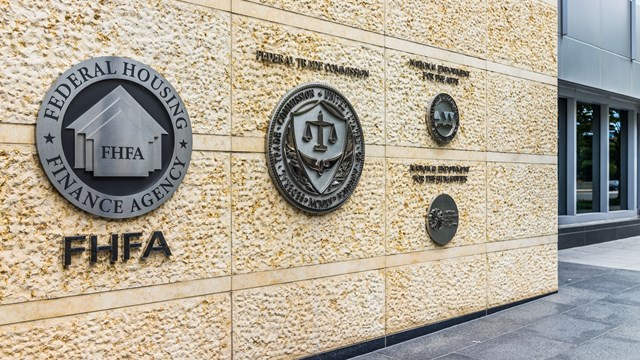What a time to be shopping for a new underlying mortgage! Interest rates are
again nearing a 30-year bottom and several dozen lenders are scrambling to fill their portfolios. Spreadsthe incremental amount that a lender adds to an index (such as the ten-year treasury rate) to determine a loan's interest rateare narrowing and other terms are loosening as well. To be even more competitive, a few lenders have resurrected the standing or interest only loan, a product rarely seen since the free-wheeling '80s.
The monthly payments on standing loans are substantially lower because they include just interest on the outstanding loan balance and no amount to repay the principal. These lower payments are very attractive to board members struggling to hold the line on shareholder maintenance charges. And, under certain circumstances, payments can be low enough to allow some board members to seriously discuss what they previously had only dreamed aboutreducing maintenance!
However, as appealing and politically rewarding as this might be, most boards should resist the temptation. After all, everyone has adjusted to the current level of maintenance. Any relief from a maintenance reduction will only be temporary and relatively minor. Instead, boards would be wiser to adjust the amortization schedule of their new loan to absorb most, if not all, of any savings in their monthly payment. There are six important arguments to support this recommendation. But first you'll need to understand what amortization is and how it works.
A Simple Principle
Of all the words in the financial lexicon, amortization may be the most difficult to pronounce. Its syllables are regularly rearranged into a wondrous array of stammered approximations. It is, however, one of the easiest to define. Quite simply, amortization is the repayment of some, or all, of the amount borrowed in a gradual and systematic way over the life of the loan. It is impossible for the schedule of amortization (or repayment) to be shorter than the term (or life) of the loan, but it can be longer.
For example, a five-year loan could have a 25-year amortization schedule. In this case, monthly payments would consist of interest on the outstanding balance computed at the stated loan rate plus a small portion of the principal. The amount of principal in each payment grows over the life of the loan and is calculated to repay the entire amount borrowed if the loan were in place for the full 25 years. When the loan comes due at the end of the fifth year, however, a substantial balance remains that must be repaid or refinanced. Loans with this structure are called term or bullet loans.
Alternatively, a five-year loan could have a five-year amortization schedule. As you might guess, the monthly payment for such a loan would be much higher since the repayment period is shortened from 25 years to just five. Loans with amortization schedules equal to their term are called self-amortizing or self-liquidating loans.
So, is there any benefit to an interest only loan? Certainly. They produce the lowest monthly payment of any loan structure. For the co-op whose budget demands the absolute lowest payment, a standing loan may be the appropriate option. But for everyone else, amortization is the way to go. As I noted early, there are six reasons.
Six Reasons to Amortize
The first reason to amortize is the current market. The rare coincidence of some of the lowest rates in 30 years and a larger universe of hungrier lenders presents a unique opportunity to pay down co-op debt, build shareholder equity, and still reduce what is, for most co-ops, the largest single expense. What a great and easy way to offset the inevitable increases in real estate taxes, energy costs, and other budget items!
The second reason is tomorrow's market. Right now, demand is up and co-op values are rising fast. Bidding wars are the rule rather than the exception, and board review committees are being very selective as to whom they admit as new shareholders. But markets change. Remember that it wasn't all that long ago that apartments went begging and committees had no one to interview but subletters. In a down market, both lenders and buyers are much more critical of a building's financial profile. Having lower debt will make your co-op relatively more attractive. So, learn from the past and prepare for the future by amortizing.
Third, lenders use a host of factors to decide whether or not to make a loan. Market value is one such factor. Sell-out and owner-occupancy percentages are two more. But one of the most important determinants is loan-per-unit. The lower your loan-per-unit, the better your credit rating. So use this (temporary) market dip to lock in not only a great rate, but also some debt reduction.
Fourth, more rapid amortization can make today's good loan terms even better, since amortization reduces a lender's risk. Anything that reduces risk should be reflected in a lower interest rate or other concessions. You shouldn't expect more than a few basis points (a basis point equals one one-hundredth of one percent) for increasing your amortization, but why pass up the savings if your budget will accommodate a bigger payment?
A fifth reason for including amortization in any new loan is that it improves the marketability of apartments. There is no doubt that low maintenance is a boon to sales. But most prospective purchasers expect their maintenance to go up over time. A short-term reduction in maintenance following a refinancing will most likely be seen for what it isa temporary bone to current shareholders or a blatant attempt to boost sales. Savvy buyers look at the overall picture of a co-op and place a higher value on a financial structure that guarantees fiscal discipline and equity build-up over the long term.
The last reason is perhaps the most compelling. Without amortization, a co-op is almost certainly doomed to increase its debt with every refinancing, just to cover closing costsnot to mention repairs and capital improvements. Since so few co-ops save regularly for repairs and improvements, and even fewer save for future refinancing costs, amortization is a simple form of debt control. Virtually every co-op has some debt, but that debt should remain relatively constant. Allowing your debt to creep higher over time is a dangerous habit. Amortization is an easy cure for that problem.
The Best Choice
As a mortgage broker, I am often asked, What is the best kind of loan? What always comes to mind is the comedian's response: One that you don't have to pay back! Butforgetting for the moment all those loans our parents gave uswe all know that there is no such thing as a loan that doesn't have to be paid back. In today's world, an amortizing loan is the next best choice.
Mr. Niland is a managing partner at First Funding, a mortgage brokerage firm that has offices in Manhattan and Rochester.







Leave a Comment